Tricuspid Stenosis/Tricuspid Regurgitation WK 5
1/60
There's no tags or description
Looks like no tags are added yet.
Name | Mastery | Learn | Test | Matching | Spaced |
|---|
No study sessions yet.
61 Terms
How many leaflets does the AO have?
Anterior leaflet
Posterior leaflet
Septal leaflet
Where is the tricuspid valve located in this image?
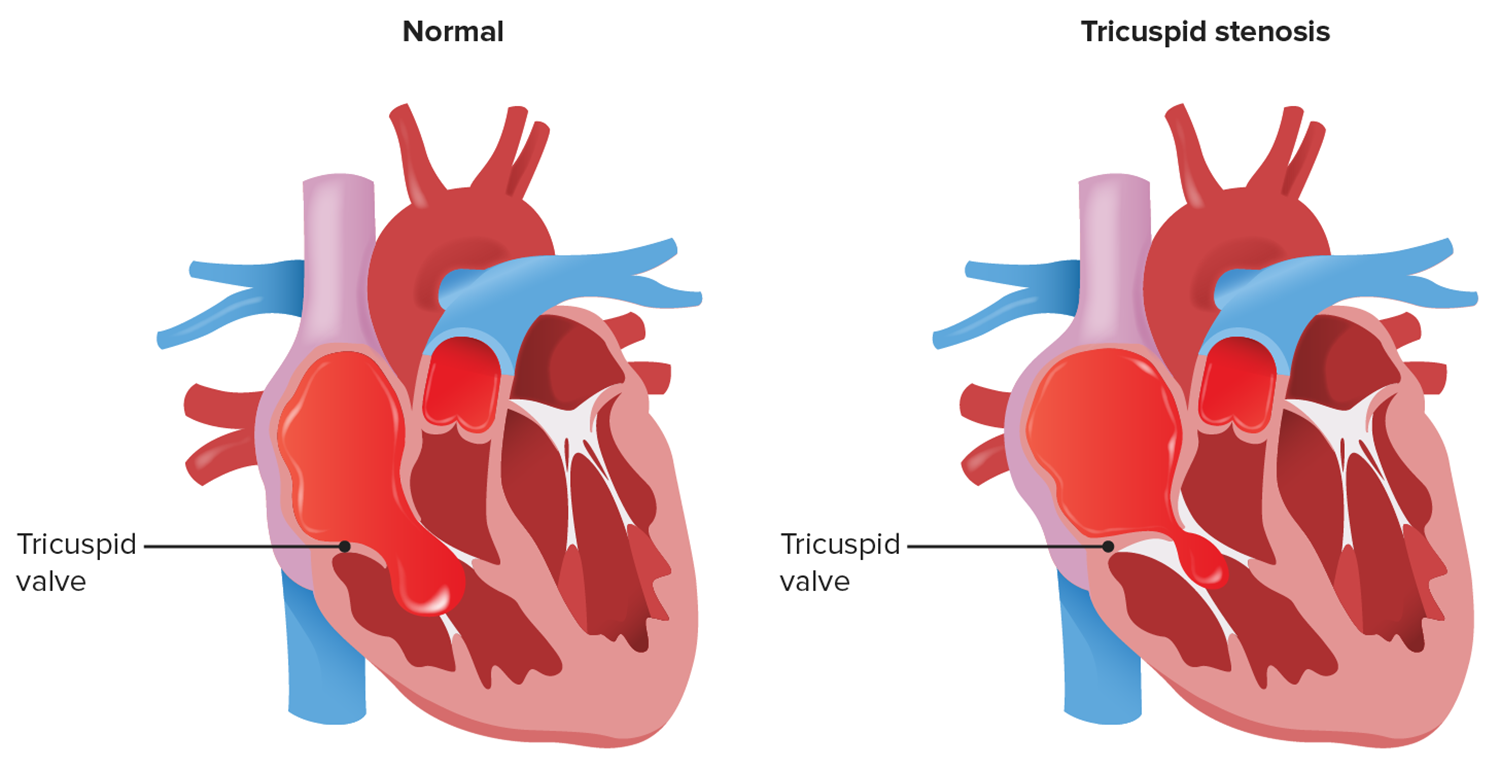
What is TV stenosis?
A condition in which the valve between RA and LA are not functioning properly. Tricuspid stenosis often occurs with other heart valve problems.
A narrowing of the tricuspid valve orrifice that impedes diastolic flow traveling from RA>TV>RV
Tricuspid Stenosis
Tricuspid stenosis causes a
reduction of blood from the RA into the RV
Tricuspid Valve Stenosis causes the______to become enlarged, decreasing the amount of blood entering the _____.
RA/RV
Atrisia is?
Absent
What is ebstein?
displacement of the tricuspid valve leaflets downward into the right ventricle, leading to a functional stenosis.
the most common cause of tricuspid valve disease
Rheumatic fever
________(always combined with TR)
Carcinoid
Etiology of the Tricuspid stenosis
Congenital heart problems
Heart attack or coronary heart disease
Congestive heart failure
Endocarditis—heart infection
or inflammation
Trauma to the heart
Secondary aka functional TS
Signs and Symptoms of TS
Ascites
Abdominal swelling
jaundice
Peripheral edema
RUQ pain
Complications of TS
-usually not an isolated disease state. Evaluate other valves for stenosis.
-Increased risk IE
-If clot/tumor, increased risk of embolization
-Decreased Cardiac output
What is Tricuspid Atresia?
is a condition present at birth (congenital heart disease), a solid wall of tissue blocks the blood flow between your right heart chambers.
Ebstein's anomaly
is a condition in which a malformed tricuspid valve sits lower than normal in the right ventricle, causing blood to flow back into the right atrium (TR).
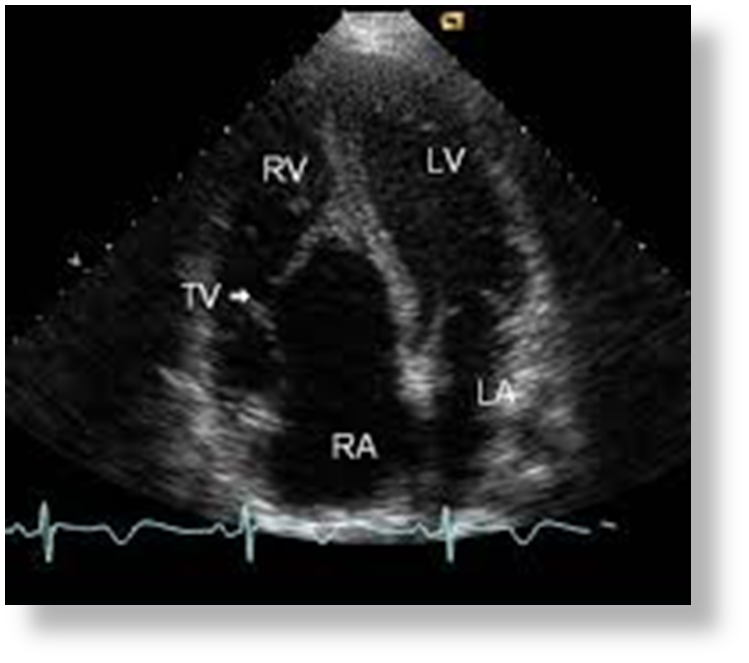
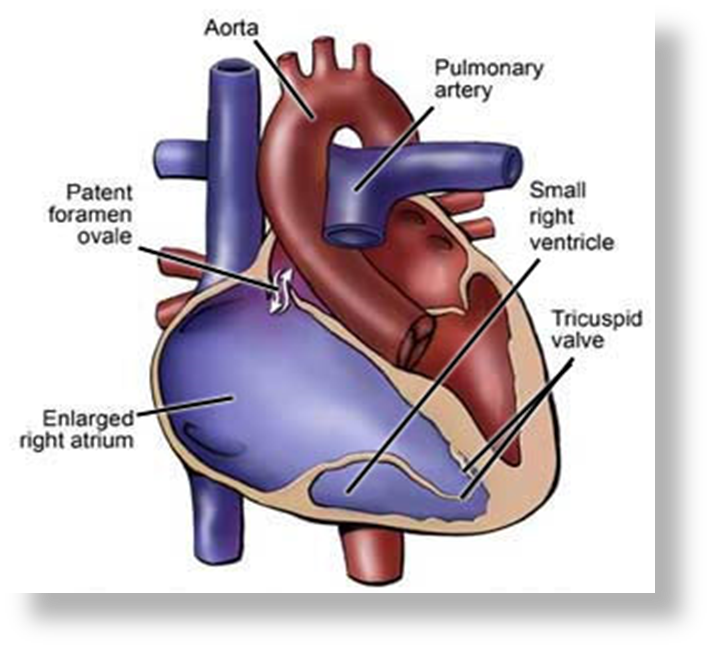
Carcinoid heart disease
is a consequence of the effects of excess hormone production. Serotonin in high concentrations entering the heart from the liver causes fibrosis, particularly in the tricuspid and pulmonic valves, resulting in right-sided heart failure.
Nearly ____ of patients exhibiting the _______ will develop carcinoid heart disease (CHD) with fibrotic endocardial plaques and associated heart valve dysfunction that classically involves the ______.
40%/carcinoid syndrome/tricuspid valve
On an echocardiogram this presents a thickening and retraction of the tricuspid valve leaflets during systole. The right-sided image demonstrated severe tricuspid valve regurgitation.
Carcinoid heart Disease
What can be heard during auscultation?
With tricuspid stenosis a mid diastolic murmur can be heard during auscultation
What does TS creates?
TS creates diastolic rumble with an opening snap that varies with respiration

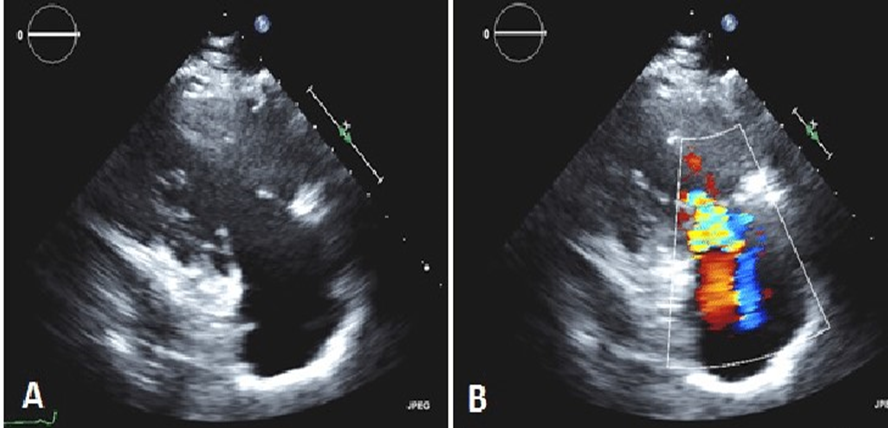
Asses RVIT
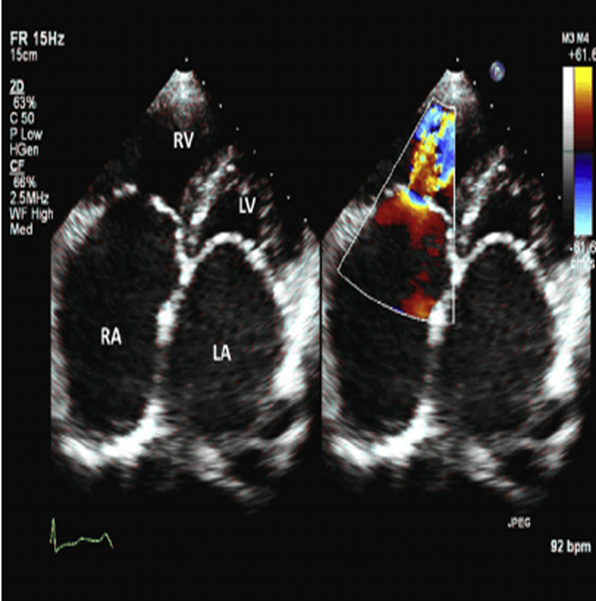
Asses apical 4
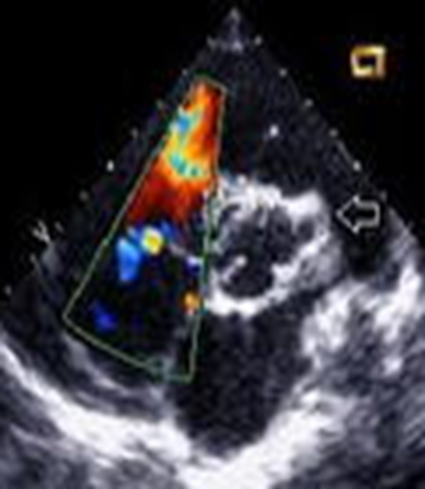
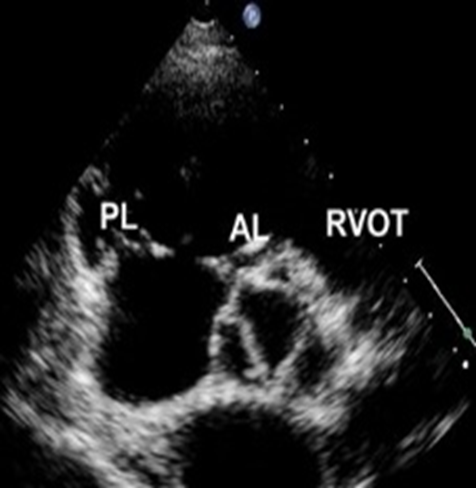
Asses RVOT in SAX

asses in Spectral doppler
Tv Inflow (PW)
RV inflow pattern
PWD gate at tips of TV leaflets
Normal Flow is Antegrade
Use TV package (E/A velocity)
Measure peak E velocity and Decel slope
>1 m/s suggestive of high velocity
2. Measure peak A wave
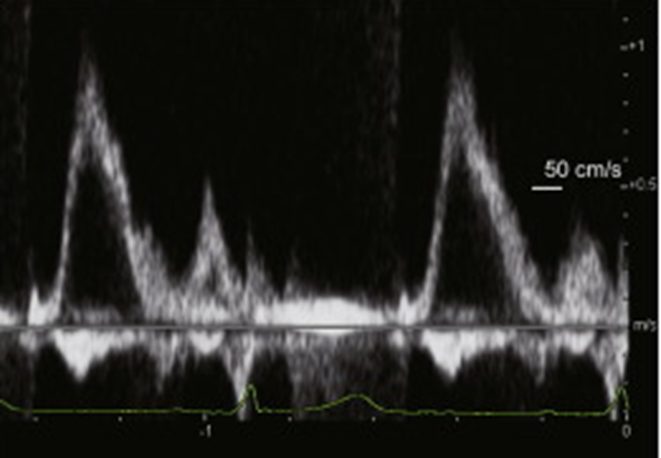

TV stenosis (CW)


DECREASED E-F SLOPE
OBTAIN TVA USING
PHT METHOD
NORMAL TVA 7-9 CM
TRACE E & A WAVE TO OBTAIN MEAN PG
Severity Scale
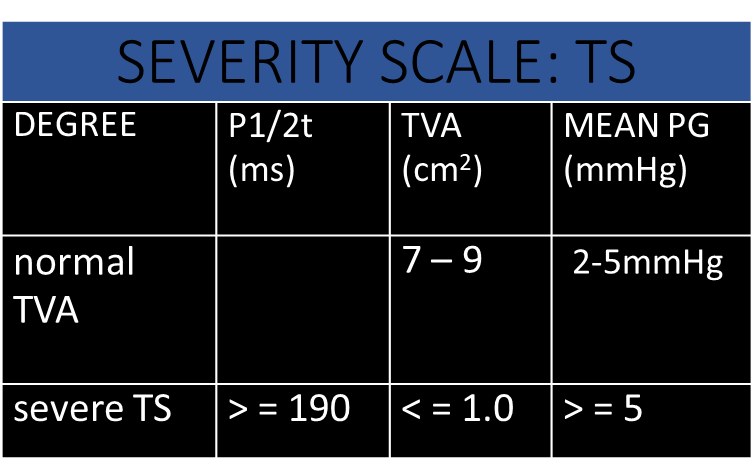
Tricuspid Regurgitation
is leakage of blood backwards from the right ventricle into the right atrium during systole; may be acute, chronic or intermittent.
What happens during Tricuspid Regurgitation?
As the right ventricle contracts to pump blood forward to the lungs, some blood leaks backward into the right atrium, increasing the volume of blood in the atrium.
As a result of TR..
As a result, the right atrium can enlarge, which can change the pressure in the nearby chambers and blood vessels.
Causes of TR
Carcinoid Heart Disease (HD) with TR
Carcinoid heart disease (HD) occurs when large amounts of vasoactive substances such as serotonin, tachykinins, and prostaglandins reach the right side of the heart, consequent to reduced hepatic metabolism from extensive metastatic liver involvement of the carcinoid tumor.
The most common cause of TR
The most common cause of TR is Secondary (functional)
An increase in size of the right atrium or right ventricle, causing annular dilatation
Secondary causes of TR

Tricuspid valve regurgitation often _____ cause signs or symptoms until the condition is ______. You may be diagnosed with this condition when having tests for other conditions
Doesn’t/ Severe
Symptoms of TR ex)
Noticeable signs and symptoms of tricuspid valve regurgitation may include:
Fatigue
Declining exercise capacity
Swelling in your abdomen, legs, or veins in your neck
Abnormal heart rhythms
Pulsing in your neck
Shortness of breath with activity
You may also notice signs or symptoms of the underlying condition that's causing tricuspid valve regurgitation, such as ________.
Pulmonary Hypertension
How does The Murmur sound with TR
-Holosystolic Murmur
-Increases with Inspiration
-tricuspid regurgitate murmur that is more easily heard with inspiration.
Rivero-Carvellos Sign
-tricuspid regurgitate murmur that is more easily heard with inspiration.
Treatment Options For TR
Usually, secondary problem
-Annuloplasty
-Tricuspid Valve replacement
Complications and signs of TR
-Enlarged RA, RV, IVC, Hepatic veins, SVC & Neck veins
-leg & abdominal swelling
-liver enlargement & portal HTN
Right Ventricular Systolic Pressure (RVSP) is used to
RVSP is used to estimate right side pressures in the vessels leading to the lungs. This is used to determine pulmonary hypertension.
TR Vmax + RAP= RVSP
Pulmonary Hypertension (PHTN)
PAP elevation
caused by another disease
not a disease of pulmonary vessels
identified by:
elevated SPAP
elevated PVR (The resistance the RV must overcome
Pulmonary Atrial Hypertension (PAH)
Chronic, an incurable subgroup of PH
PAP elevation
Caused by pulmonary vessel disease
Identified by:
elevated SPAP (> 25 mmHg at rest or > 30 mmHg with exercise)
How to obtain the rsvp/spap
1. Place the CW cursor through the TR color jet
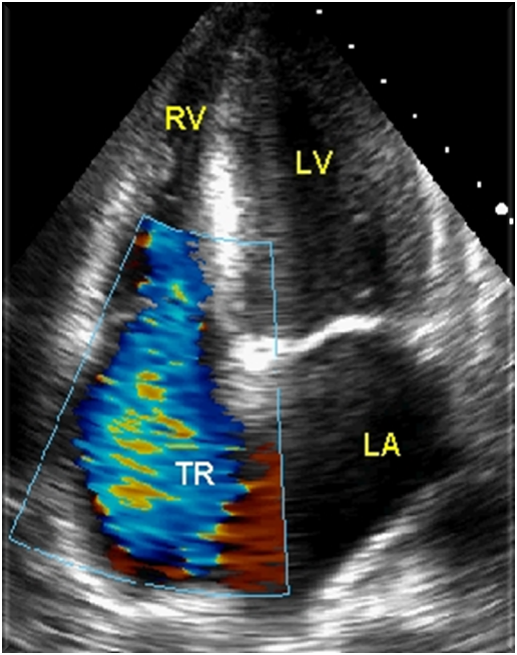
2. Measure the tricuspid regurgitant waveform to achieve the tr velocity

3. The machine will use the TR Vmax velocity and turn it into a pressure gradient. This is done by using the Bernoulli equation
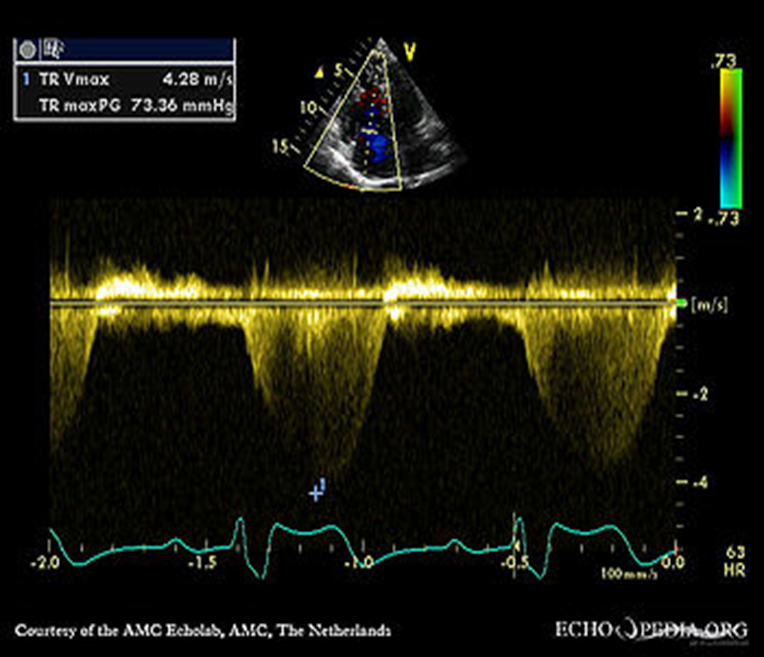
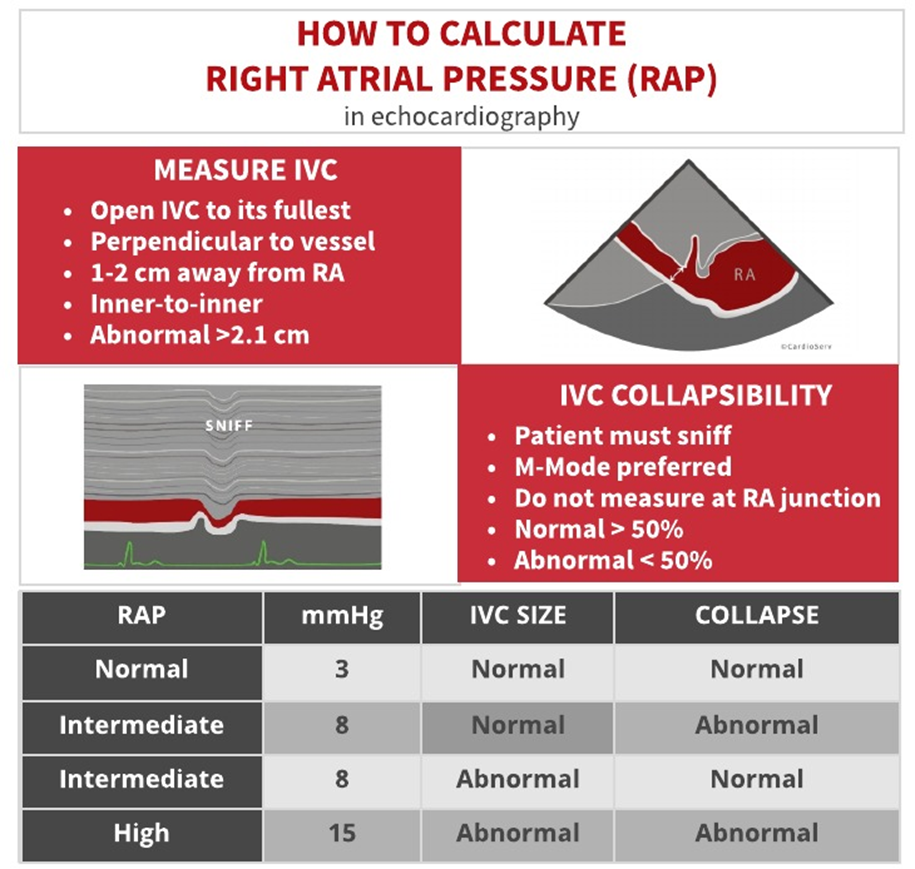
If TR= 42MMHg+________
IVC=2.2
Add Sniff
=57
Ex? Since anything over 2.1 is abnormal and there was a sniff we add The high of 15. So 42+15= 57. If there was no sniff or the Ivc was 2.1 we would have added an 8 instead.
RVSP / Systolic pulmonary artery pressure (SPAP) determined by the TR
TR Max PG + RAP = RVSP/SPAP
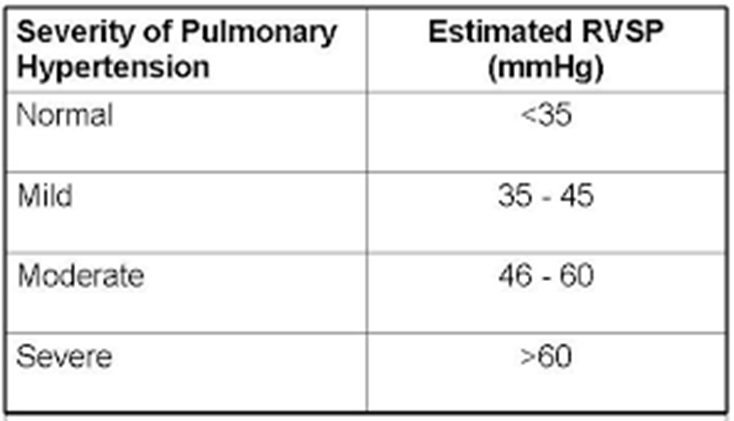
Tricuspid Regurgitation Color Jet
Assess TR jet width and length in all views. Adjust color gain, scale, and color box
Views in RVIT, SAX AO, A4C
Normal hepatic vein flow travels _____ from the transducer towards the IVC and is encoded in _____
away/ blue.
TR flowing into the IVC & Hepatic veins will flow ______ the transducer during systole and is encoded in _____
towards/red
On the spectral waveform, this systolic flow will appear _____ the baseline (______)
(color & spectral flow reversal of the hepatic veins)
above/ antegrade
The hepatic vein waveform can be reflective of the ______
severity of TR present.
The more severe the regurgitation, the more _______ the hepatic waveform becomes.
pulsatile
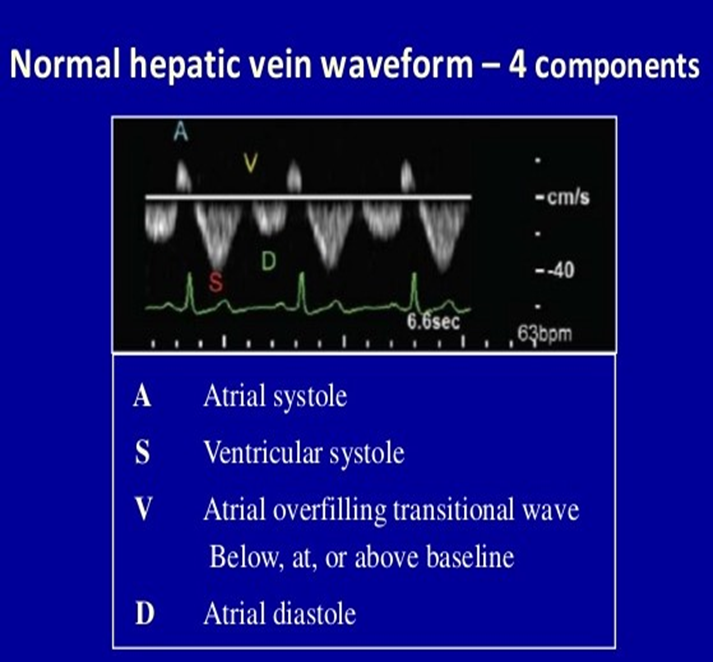
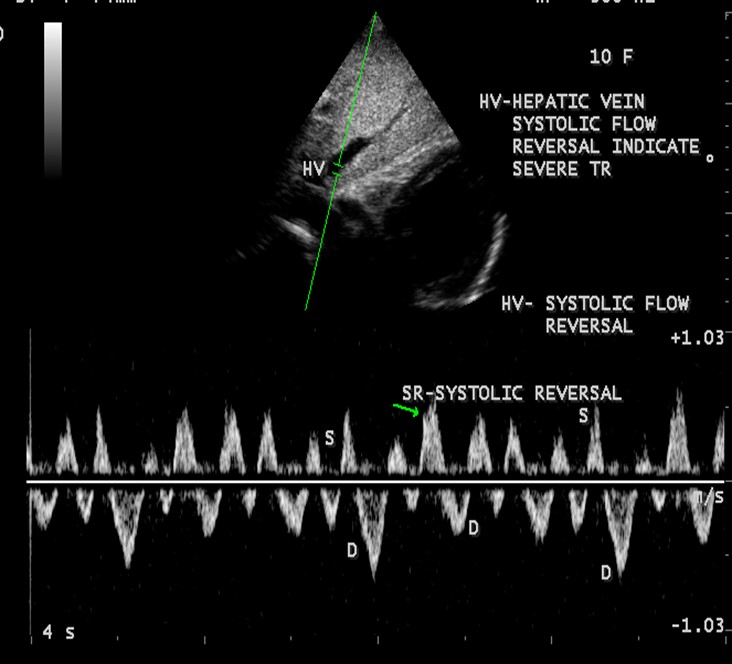
anything above baseline means flow reversal
How to prove severe TR
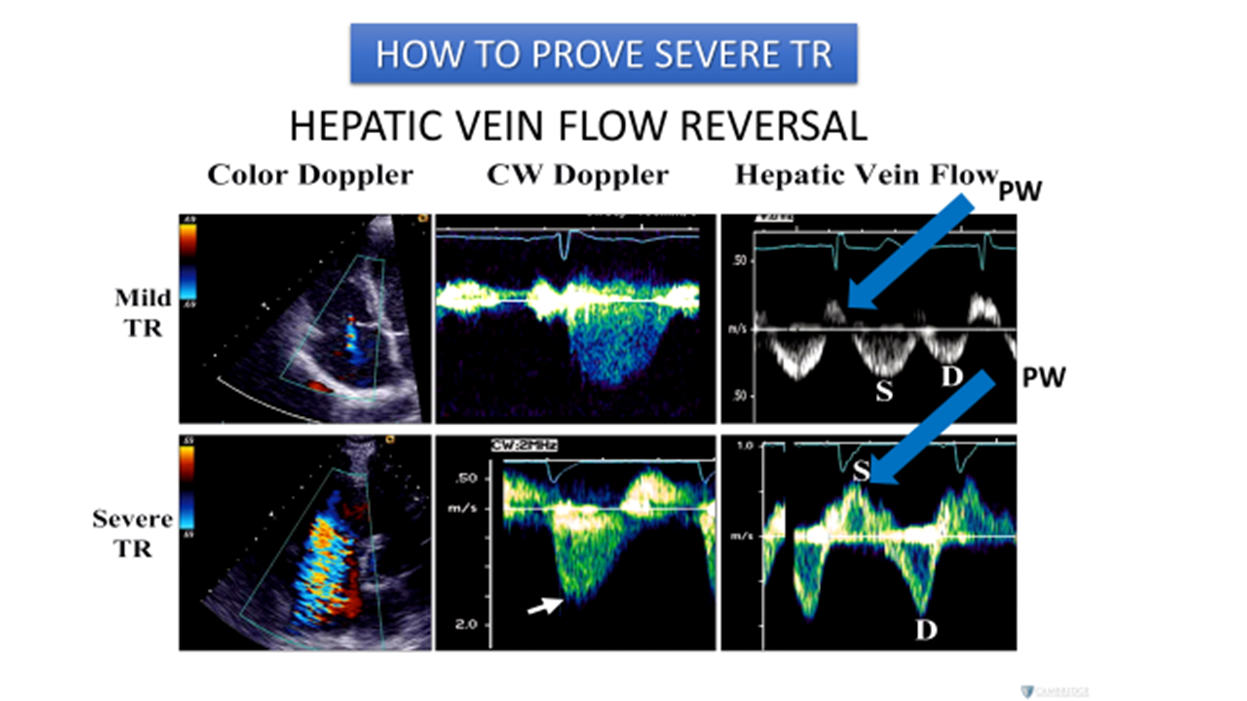
Tricuspid valve prolapse is an ______ echocardiographic finding that is most commonly associated with ______.
Infrequent/ Mitral Valve Prolapse
(TV FLAIL) TR caused by flail leaflets is most often_____, is caused by_______endocarditis or is a consequence of a ________.
Post traumatic/Endocarditis/myxomatously degenerated valve
The clinical presentation is________ with TV flail.
The clinical presentation is severe and is characterized by excess mortality and high morbidity.
Quantification of TR
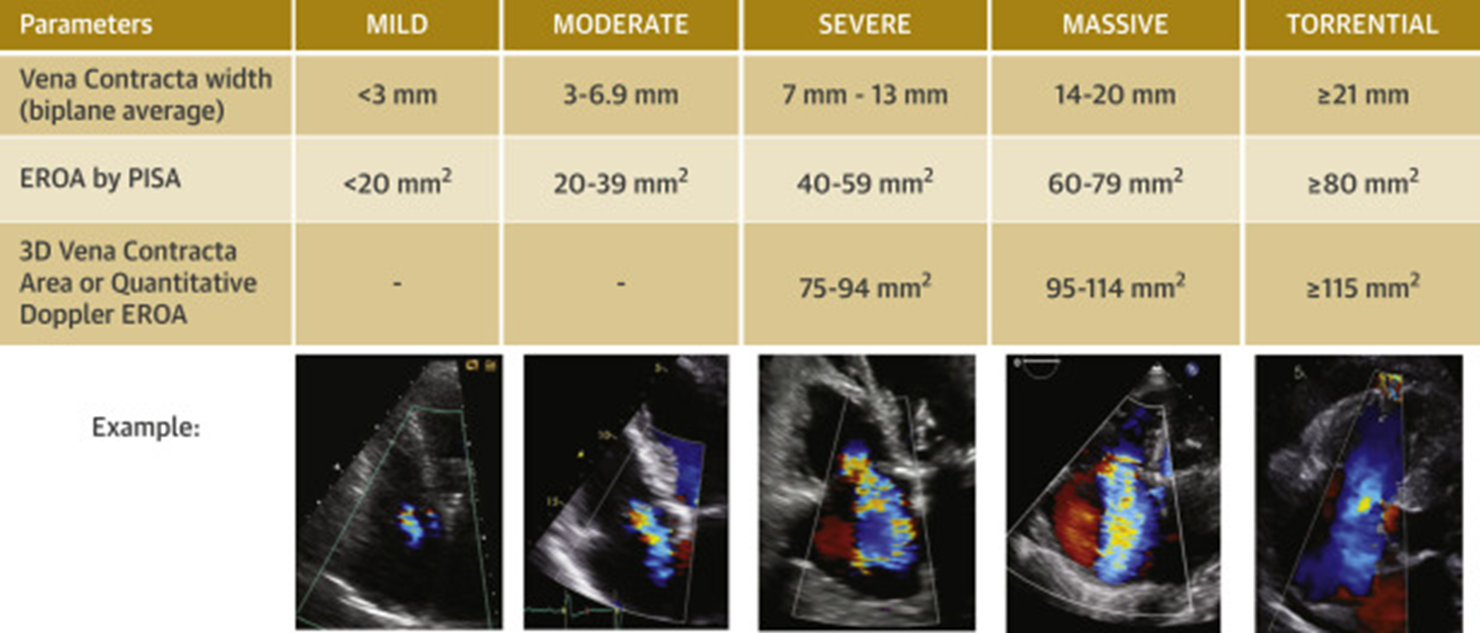
Can you asses RVSP if a patient is on a Ventilator?
No because the ventilator is breathing for you.